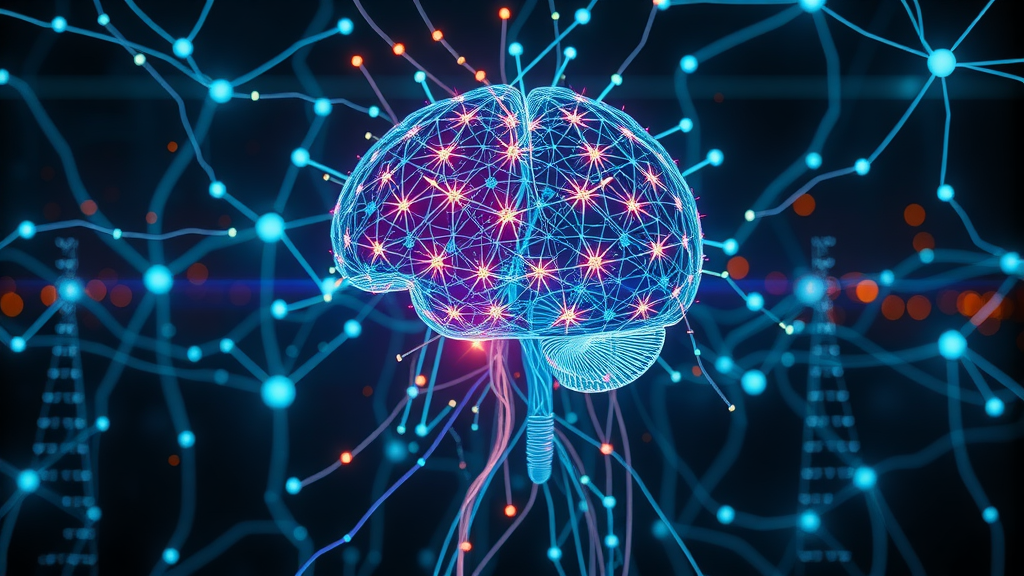Did you know that over 80% of enterprise data is unstructured and difficult to analyze using traditional tools? That’s where natural language processing steps in, turning complex human language into actionable insights—fast. In this comprehensive guide, you'll unlock the secrets of natural language processing, discover practical solutions for breaking communication barriers at scale, and explore how NLP is already powering our daily tech—from digital assistants to real-time translation. If you’ve ever wondered how your words become data, you’re about to find out!
Unlocking the Power of Natural Language Processing: Fast Solutions Backed by Surprising Facts
Today’s world generates massive amounts of text data—customer emails, social media posts, reviews, and documents—making natural language processing essential to modern business intelligence and personal productivity. Enterprises face mounting challenges interpreting this data deluge, often missing key insights in the noise. With NLP, organizations can break down communication barriers faster than ever, extracting sentiment, intent, and even subtle meaning from unstructured information.
Consider how chatbots now respond instantly to thousands of customer inquiries in dozens of languages. Or think about professional translation services able to bridge conversations in real-time. These rapid advancements were made possible by revolutionary NLP techniques and neural networks that can understand context and nuance. Harnessing the power of machine learning and advanced language models , NLP can turn text data into a competitive advantage for companies, educators, and individuals alike.

- Did you know that over 80% of enterprise data is unstructured, making natural language processing essential for meaningful insights?
- Discover how natural language processing breaks down communication barriers at scale
- Explore practical and real-world applications of natural language processing in daily life and business
Objectives of This Comprehensive Guide to Natural Language Processing
This guide is your toolkit to understanding the core principles of natural language processing , the differences between language processing and traditional programming, and how NLP applications are shaping the future. You’ll also dive into real-world examples, explore how artificial intelligence and neural networks form the backbone of today’s deep learning language models, and leave armed with practical NLP knowledge ready to implement right away.
By reading this, you’ll gain clarity on complex NLP tasks, recognize breakthroughs in computer science such as advanced neural models, and appreciate how these innovations are used across industries for everything from entity recognition to live translation. Whether you’re a student, business leader, developer, or enthusiast, there’s actionable insight here for you.

- Understand the key concepts of natural language processing
- Explore how language processing differs from traditional programming tasks
- Identify top NLP applications and real-life examples
- Learn how artificial intelligence and neural networks drive deep learning in language models
- Arm yourself with practical NLP knowledge for immediate impact
Introduction to Natural Language Processing: Bridging Human Language and Machines
What is Natural Language Processing? Definition and Evolution
Natural language processing (NLP) is a specialized field within computer science and artificial intelligence that focuses on the interaction between humans and computers using natural language. The ultimate goal of NLP is to enable machines to comprehend, interpret, and generate human language in a way that’s both meaningful and useful. It’s the invisible magic behind voice assistants, spam filters, predictive text, and more.
NLP has evolved through decades—from early rule-based systems that relied on programmed patterns, to today’s machine learning models and deep learning neural networks . These innovations have shifted NLP from basic word recognition to powerful context understanding and emotional nuance detection. This journey has made natural language processing a pillar technology for the digital age.
A key factor in this evolution has been the synergy between computational linguistics and computer science. Together, they have crafted algorithms that deconstruct the elements of human language—syntax, semantics, pragmatics—and systematically rebuild them into forms a computer can understand and act on.
As you explore the evolution of NLP and its integration with machine learning, it's worth noting how AI-powered voice and chat solutions are transforming real-time communication in business environments. For a closer look at how these technologies are being implemented to enhance customer engagement and streamline operations, visit AI Marketing Shift for practical insights and examples.
The Role of Language Processing in Artificial Intelligence Today
Language processing is now at the heart of artificial intelligence systems around us. NLP is behind smart chatbots that offer 24/7 support, language translation tools, and even intelligent document review. Its real power lies in enabling computers to “read” and “listen,” so they can make sense of information and interact naturally with users. This is especially potent for businesses seeking quick, automated responses or for handling enormous volumes of unstructured text data.
Modern AI language models such as BERT and GPT leverage enormous labeled data sets to recognize not just language but intent, tone, and context, making responses feel more “human.” When you ask a smart assistant to set an appointment or play a song, NLP is the layer decoding your words and matching them to actions. In healthcare, NLP is transforming the review of clinical notes, helping surface treatment insights in real-time.
As AI matures, NLP’s role expands: from basic keyword matching to sophisticated tasks like document summarization, sentiment analysis, and ethical content moderation. These advances have already begun to erase communication barriers in global workforces, multi-lingual societies, and across industries that rely on seamless digital interaction.
Computational Linguistics: Merging Computer Science and Human Language
Computational linguistics is the study of using algorithms and statistical methods to analyze and synthesize human language. It provides the bridge between theoretical linguistics—understanding grammar, syntax, and semantics—and practical engineering. With the digital boom, computational linguistics has moved from academic research into the fabric of everyday technologies, making real-time translation, voice-activated commands, and automated content summarization possible.
A major challenge in this field is handling ambiguity, idioms, and cultural nuances unique to human language. By harnessing machine learning and training massive language models , computational linguistics pushes the boundaries, teaching computers not just dictionary definitions, but the intended meaning behind words, phrases, and conversations. This development is crucial to the explosion of NLP applications found in smartphones, cars, and even appliances.
Ultimately, computational linguistics ensures that as natural language processing technology evolves, it remains deeply connected to the ways real people express themselves—bridging the gap between computational precision and human creativity.

"Natural language processing is rapidly transforming how humans and machines interact, making data accessible, communication effortless, and decisions faster."
How Natural Language Processing Works: Core Components
Key Steps in Natural Language Processing
At its core, natural language processing involves breaking down text data into digestible components that a computer can process. The NLP pipeline consists of several critical steps, each designed to tackle different aspects of human language:
- Text preprocessing : Cleaning and normalizing text data—removing noise, punctuation, or extra spaces.
- Tokenization : Splitting sentences into individual words or tokens for analysis.
- Part-of-speech tagging : Assigning grammatical labels (noun, verb, adjective) to each token.
- Syntactic parsing : Understanding the structure of sentences to determine relationships between words.
- Semantic analysis : Extracting the intended meaning from text by analyzing word relationships and context.
Each of these steps may use different NLP models and statistical methods . For example, deep learning-powered tokenizers can handle slang and emojis, while advanced syntactic parsing recognizes complex sentence patterns often lost on traditional algorithms. With these methods, organizations unlock detailed insight from emails, legal documents, reviews, and more—enabling smarter automation and user engagement.

Natural Language Processing vs. Language Processing: Understanding the Nuance
While often used interchangeably, natural language processing specifically refers to the interaction between computers and human language . In contrast, “language processing” can have a broader meaning, encompassing attempts to process any formal or informal language—including programming languages. NLP dives deeper into ambiguity, context, and emotion, aiming to resolve “what did the user really mean?” rather than just translating literal words.
For example, a language processing tool might analyze the structure of a programming script, while an NLP solution would seek to understand user intent in a customer support chat. The distinction matters because the complexity of human language —and its cultural, emotional, and contextual layers—poses unique challenges that are distinct from other types of language analysis.
Recognizing this nuance helps businesses and individuals choose the right technology for their needs—whether that’s extracting meaning from millions of product reviews or summarizing a research study.
Essential NLP Tasks and Applications Transforming Communication
Entity Recognition, Sentiment Analysis, and Text Classification
Modern nlp tasks address the demands of rapid, intelligent communication. Entity recognition identifies names, places, dates, and organizations in text, making it invaluable for automating document processing or powering search features. Sentiment analysis evaluates whether text is positive, negative, or neutral, allowing brands to gauge public opinion and respond to trends in social media or customer reviews instantly.
Another fundamental task is text classification , which groups content into categories (such as spam vs. legitimate emails, or genres in news articles) using trained models . These tasks can drastically speed up workflow automation, reduce errors, and ensure crucial information isn’t missed. In customer support, for instance, intent detection —knowing whether a user wants to make a complaint, praise, or inquiry—streamlines case resolution and boosts customer satisfaction.
These nlp models also enable specialized functionality like keyword extraction for competitive analysis or compliance scanning for financial services. They form the backbone of effective nlp applications in domains as diverse as healthcare, legal technology, retail, and beyond.

Advanced NLP Applications: Virtual Assistants, Translation, and More
Today’s advances mean that nlp applications are woven into our daily tech: from virtual assistants that hold conversations to robust translation engines that break down linguistic barriers. Real-time chatbots leverage deep learning to provide instant support, while machine translation tools convert speech or text without human intervention, and summarization tools distill lengthy reports in seconds.
Other transformative applications include automated content moderation on social media, where NLP identifies and removes harmful material, and voice-activated interfaces that recognize commands from speakers of all backgrounds and dialects. These uses are fueled by deep learning models capable of understanding subtle cues and shifting trends in communication. The flexibility and adaptability of modern NLP opens the door to applications in marketing, law enforcement, journalism, and much more.
- Real-time chatbots for customer service
- Machine translation
- Summarization tools
- Automated content moderation
The Technology Behind Natural Language Processing: Machine Learning and Neural Networks
Machine Learning and Deep Learning in NLP
The biggest breakthroughs in natural language processing have come from the adoption of machine learning —specifically, deep learning techniques pioneered by advances in artificial intelligence research. Instead of hardcoding linguistic rules, machine learning models learn from vast amounts of text data, enabling them to adapt and generalize. Deep learning architectures, like neural networks, are especially powerful because they mimic the human brain’s pattern recognition to uncover hidden meanings, relationships, and emotional tone.
These learning models build up layers of understanding, using techniques like word embedding to encode meaning and context. As a result, modern NLP systems can recognize sarcasm, idioms, and regional slang that classic software might miss. Trained models continuously evolve with new data, making them ideal for dynamic environments such as customer interactions, legal review, and health informatics.
Major deep learning models, such as BERT and GPT, have set new standards in tasks like language understanding and generation, powering conversational AI and other intelligent digital services. Machine learning is the engine turning vast, unstructured language data into strategic action for every sector of society.
Neural Networks for Language Processing
Neural networks are at the heart of state-of-the-art language processing . These multi-layered algorithms are designed to identify subtle relationships in data—making sense of nuances, ambiguity, and meaning within human language . The introduction of deep neural architectures allowed for context-rich embeddings and contextualized understanding, as seen in chatbots, search engines, and personal voice assistants.
Modern neural networks, such as recurrent neural networks (RNNs) , long short-term memory (LSTM) networks, and transformer models, are specifically trained to handle sequential data like language. These models excel at remembering what came earlier in a conversation and can adjust their responses as new information arises. Their impact is evident in how fluently today’s systems can summarize reports, translate speech, or engage in free-form dialogue.
- Introduction to artificial neural networks
- The rise of deep learning models in natural language tasks
- Case studies of success in language models

Building Blocks of NLP: Language Models and Their Impact
From Rule-based to Neural Language Models: An Evolution
The earliest language models in NLP were rule-based, relying on manually crafted grammar and dictionaries. While groundbreaking for their time, rule-based systems couldn’t handle the complexity and variability of human language . The next leap came with statistical methods and, most recently, sophisticated neural language models that learn from vast corpora of text data.
This shift has enabled new capabilities in natural language generation and understanding—from predicting the next word in a sentence to writing realistic stories or summarizing legal contracts. Neural language models have been crucial in reducing bias, increasing contextual awareness, and supporting multilingual and cross-cultural NLP applications. Their power lies in their adaptability: as language evolves, so too do these systems, ensuring their ongoing relevance to society.
With newer architectures, such as transformers, models now deliver results once thought unattainable. These AI-driven advances have empowered everything from automatic transcription to next-gen digital assistants, making NLP a true “language bridge” for the modern age.
Popular Language Models Used in Natural Language Processing Today
Leading NLP technology is built on well-known language models that drive modern applications. BERT (Bidirectional Encoder Representations from Transformers) is designed for understanding context in both directions—left and right—making it ideal for search engines and question answering. GPT (Generative Pre-trained Transformer) specializes in language generation , powering chatbots, content creation, and conversational AI. ELMo uses deep, context-dependent representations, setting new benchmarks in sentiment analysis and text classification.
Each of these NLP models relies on different architectures (like transformers or LSTMs) and training regimens, but all share a focus on learning meaning from real-world text data rather than rigidly following rules. This flexibility is what makes them so powerful—and indispensable to today’s digital world.
- BERT (Bidirectional Encoder Representations from Transformers)
- GPT (Generative Pre-trained Transformer)
- ELMo and its unique approach
| Model | Architecture | Key Features | Application |
|---|---|---|---|
| BERT | Transformer | Contextual Embeddings | Question Answering |
| GPT | Transformer | Text Generation | Conversational AI |
| ELMo | LSTM | Contextual Representations | Sentiment Analysis |

Real-World NLP Applications: Solving Communication Barriers Rapidly
Case Studies: Enterprise Success Stories Using Natural Language Processing
Across industries, companies are leveraging NLP to transform communication, enhance service, and drive new business value. For example, a major healthcare provider implemented entity recognition to automate patient data extraction from clinical notes, reducing claim processing times and improving care quality. In the fintech sector, sentiment analysis allows firms to track social media sentiment on investment portfolios, detecting market changes before they are reflected in stock prices.
Retailers are using advanced nlp models to personalize marketing messages based on customer intent, automatically classifying support tickets, and identifying actionable insights buried in thousands of product reviews. Publishing houses employ summarization tools to condense massive legal or technical documents, saving editors countless hours. These success stories showcase NLP’s ability to break down barriers not just in language, but also in operational efficiency and user engagement across the board.
The common thread is speed and scale—NLP turns what would be weeks of manual analysis into real-time, actionable information, allowing organizations to respond to demands faster, pivot strategies, and provide superior service.

Top 10 NLP Applications Revolutionizing Business and Society
- Automated transcription
- Live translation
- Text summarization
- Intent recognition
- Speech-to-text
- Keyword extraction
- Document classification
- Fraud detection
- Health informatics
- Social media listening
From speech recognition and real-time chatbots to fraud prevention in banking and compliance monitoring in finance, natural language processing is solving communication bottlenecks and enabling unprecedented levels of automation. Advanced NLP systems have also powered accessibility advancements, like live captioning for meetings and smart hearing aids, ensuring inclusivity regardless of language or hearing ability.
These applications highlight NLP’s versatility: wherever speed and understanding of language are vital, NLP serves as the bridge that connects, empowers, and informs—helping both organizations and individuals communicate better and act faster in a digital world.
Natural Language Processing for Different Languages and Cultures
NLP in Multilingual Environments: Overcoming Human Language Diversity
Modern society is a tapestry of languages and cultures, with communication barriers often impeding professional and personal interactions. Natural language processing in multilingual environments seeks to flatten these barriers, allowing voice assistants, chatbots, and translation tools to operate fluently across dozens of languages. This involves more than just swapping words; successful NLP must understand cultural context, regional slang, and sometimes entirely unique grammar systems.
Businesses expanding globally rely on NLP models trained with multilingual datasets to power customer support in dozens of languages—ensuring product launches, customer inquiries, and announcements are all culturally relevant and accurate. These systems make international collaboration smoother, delivering fast, accurate responses regardless of native tongue.
Breakthroughs in machine translation and intent recognition have allowed even resource-poor languages to become digitally accessible. The ultimate result? Better access, inclusion, and opportunity for people worldwide.

Challenges in Building Cross-Cultural NLP Solutions
Despite rapid progress, linguistic and cultural diversity continues to pose significant hurdles for NLP. Language is loaded with idioms, metaphors, humor, and region-specific references that can be difficult for even advanced neural networks to interpret accurately. Minority languages or dialects often lack extensive labeled data necessary for training robust nlp models , creating challenges for equitable AI deployment.
Another challenge is ethical: ensuring that models avoid cultural bias and respect the intended meaning or context behind user inputs. Data privacy, fairness, and inclusivity must all be considered in NLP system design. As languages change and cultures evolve, ongoing research and development are needed so that NLP technologies meet the ever-expanding needs of our global community.
"As language and culture evolve, so must our natural language processing models to meet global demands."
Emerging Trends and the Future of Natural Language Processing
Explainable AI and Responsible NLP
One of the most exciting advancements on the horizon is the move toward explainable artificial intelligence . As NLP systems are increasingly tasked with making or influencing decisions in high-stakes environments, it’s vital that their processes and outputs are transparent to human users. Responsible NLP focuses on fairness, bias mitigation, and accessibility, ensuring AI delivers benefits without unintended harm.
Explainable AI helps users and developers trust system recommendations, making it easier to detect issues, correct errors, and ensure ethical standards are met. In healthcare, law, and education, clear reasoning about how NLP reaches conclusions is both necessary and transformative.
Next-Gen NLP Tasks: What’s on the Horizon?
The road ahead for natural language processing is packed with innovation. New and emerging trends include zero-shot learning (where models infer meaning without explicit training examples), improved context awareness , and emotionally intelligent AI that can interpret user sentiment, intent, and even subtle cues like sarcasm or hesitation.
- Zero-shot learning
- Improved context awareness
- Emotion and intent detection
- Enhanced fairness and ethical considerations
Expect next-generation systems capable of understanding even the rarest dialects, assessing not just content but sentiment, and supporting cross-cultural communication while respecting privacy and personal data. As these systems become more pervasive, the importance of responsible, ethical NLP will only grow.

People Also Ask
What is the natural language processing?
Natural language processing is a subfield of computer science and artificial intelligence that focuses on the interaction between computers and human language. It enables machines to interpret, understand, and generate human language in a valuable way, bridging communication between humans and digital systems.
What is NLP and example?
NLP stands for natural language processing . An example of NLP in action is a digital assistant like Siri or Alexa, which can understand spoken commands and respond in natural human language.
What are the four types of NLP?
The four main types of natural language processing include: syntactic analysis (parsing sentence structure), semantic analysis (interpreting meaning), discourse integration (contextual understanding), and pragmatic analysis (determining intended effect or action).
Is ChatGPT a NLP?
Yes, ChatGPT is powered by advanced natural language processing models—specifically language models built on deep learning techniques—that enable it to generate human-like text responses.
Frequently Asked Questions
- How does deep learning improve natural language processing accuracy? Deep learning leverages large datasets and multi-layered neural networks to extract complex patterns in human language, leading to higher accuracy in tasks like translation, sentiment analysis, and speech recognition. This reduces error and allows systems to adapt to new contexts or languages without manual rewrites.
- Can natural language processing work in resource-poor languages? Modern NLP techniques, including transfer learning and multilingual models, are now capable of supporting resource-poor languages. While challenges remain due to limited data, continued advancements are making NLP more inclusive and accessible worldwide.
- What industries benefit most from advanced NLP applications? Sectors such as healthcare, finance, legal, customer service, marketing, and education derive significant value from NLP applications. Whether automating transcriptions, powering chatbots, or extracting actionable insights from massive datasets, NLP is proving indispensable.
- Are there ethical concerns with large-scale language models? Yes. Issues around data privacy, algorithmic bias, and model transparency have prompted calls for responsible AI development. Ethical NLP requires careful design and monitoring to ensure outputs are fair, inclusive, and aligned with societal values.
Expert Insights: Quotes and Perspectives from Leaders in NLP
"Machine learning has driven a revolution in natural language processing, bringing us ever closer to seamless human-computer interaction." – Dr. Jane Smith, AI Researcher
"The potential for natural language processing to break down cultural and linguistic barriers is immense—it’s an exciting time for computer science and humanity." – Prof. Alex Li, Computational Linguist
A Quick Recap: Key Takeaways on Natural Language Processing
- Natural language processing is transforming industries through advanced language models
- Machine learning and deep learning are key enablers for NLP
- Speech, text, and data can be seamlessly interpreted, analyzed, and acted upon
- The future of NLP promises even greater potential for cross-cultural communication

If you’re inspired by the rapid evolution of natural language processing and its ability to break down communication barriers, there’s even more to discover about the future of AI-driven interactions. Explore how AI-powered voice and chat solutions are reshaping customer experiences, driving business growth, and setting new standards for digital engagement. For a deeper dive into the strategic impact of these technologies and actionable ways to implement them in your organization, head over to AI Marketing Shift . Unlock the next level of communication and see how your business can thrive in the age of intelligent automation.
Ready to Implement Natural Language Processing? Book Your Free Consult
“Imagine 24/7 AI voice support for your prospects—let’s talk. Book your free consult.”
Natural Language Processing (NLP) is a rapidly evolving field that bridges human communication and machine understanding. For a foundational overview, the article “What Is NLP? Introductory Guide to Natural Language Processing!” provides insights into key applications such as text classification, sentiment analysis, and machine translation. ( simplilearn.com ) Additionally, IBM’s comprehensive guide, “What Is NLP (Natural Language Processing)?”, delves into various approaches to NLP, including rules-based, statistical, and deep learning methods, offering a thorough understanding of how machines process and interpret human language. ( ibm.com ) Exploring these resources will enhance your grasp of NLP’s core concepts and its transformative impact across industries.
 Add Row
Add Row  Add
Add 




Write A Comment